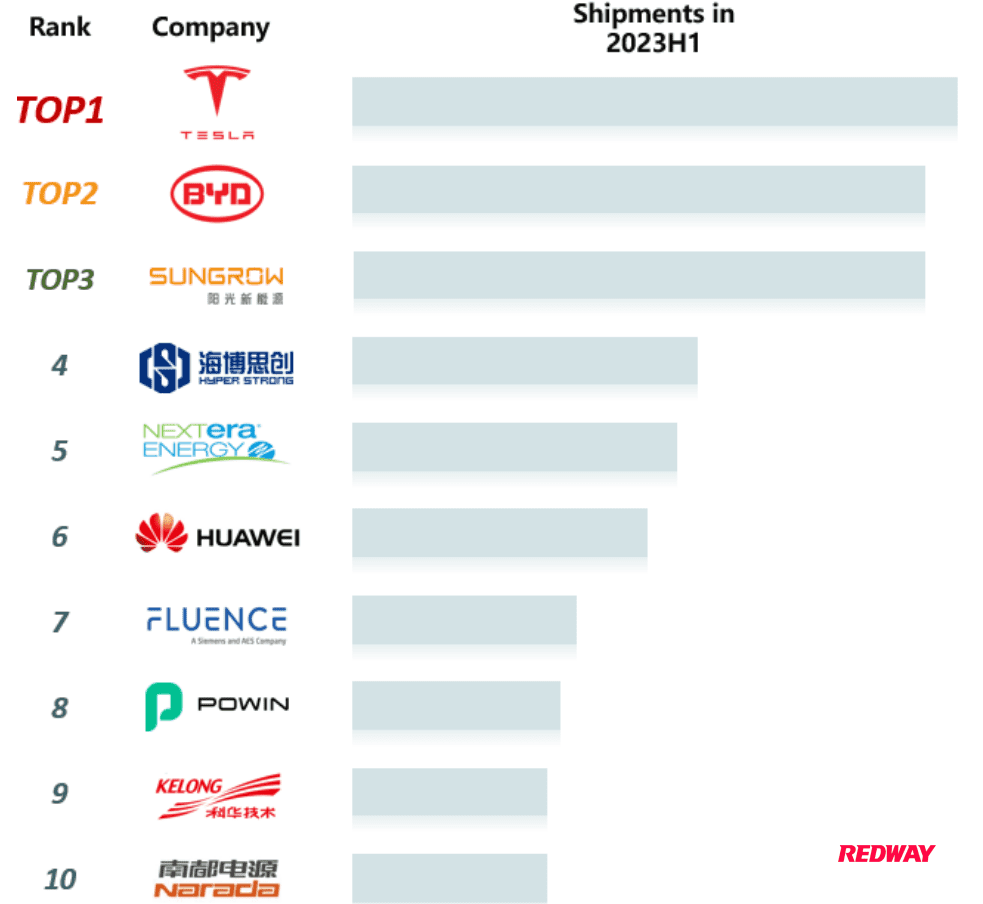The global energy storage market is witnessing unprecedented growth, driven by technological advancements, government policies, and increasing demand for renewable energy. As we look towards 2024-2025, identifying the top suppliers in this dynamic sector is essential for stakeholders aiming to leverage innovative solutions. This article explores key players, growth factors, and emerging trends shaping the future of global energy storage.
How are key players shaping the global energy storage market?
Key players in the global energy storage market include companies like LG Energy Solution, Samsung SDI, Panasonic, and newer entrants like Jinko ESS and Trina Storage. These companies are innovating rapidly, focusing on cost-effective solutions that enhance efficiency and scalability. For instance, LG Energy Solution has made significant strides in lithium iron phosphate (LFP) battery technology, which has become increasingly popular due to its lower costs and higher safety profiles compared to traditional lithium-ion batteries.Chart: Market Share of Leading Energy Storage Suppliers
| Supplier | Market Share (%) |
|---|---|
| LG Energy Solution | 25 |
| Samsung SDI | 20 |
| Panasonic | 15 |
| Jinko ESS | 10 |
| Trina Storage | 8 |
| Others | 22 |
What factors are driving the growth of energy storage systems?
Several factors contribute to the rapid expansion of energy storage systems. The declining costs of battery technologies, particularly LFP batteries, have made these systems more accessible. Additionally, increasing investments in renewable energy projects necessitate reliable storage solutions to manage intermittency. According to BloombergNEF, global installations reached a record high of over 100 GWh in 2024, underscoring this trend.Chart: Global Energy Storage Installations Growth (2019-2024)
| Year | Installed Capacity (GWh) |
|---|---|
| 2019 | 22 |
| 2020 | 30 |
| 2021 | 40 |
| 2022 | 60 |
| 2023 | 97 |
| 2024 | >100 |
Why is energy storage crucial for integrating renewable energy sources?
Energy storage plays a pivotal role in integrating renewable sources like solar and wind into existing power grids. By storing excess generation during peak production times and releasing it during demand spikes, these systems enhance grid reliability and stability. This capability is vital as countries strive to meet ambitious carbon reduction targets while transitioning from fossil fuels.
How is technological advancement influencing energy storage solutions?
Technological advancements are transforming energy storage solutions. Innovations in battery chemistry, such as solid-state batteries and flow batteries, promise higher efficiencies and longer lifespans. Moreover, advancements in artificial intelligence (AI) and machine learning (ML) are optimizing battery management systems (BMS), improving performance and lifespan while reducing operational costs.
What role do government policies play in the energy storage market?
Government policies significantly influence the growth of the energy storage market. Incentives such as tax credits, subsidies, and mandates for renewable integration encourage investments in these technologies. For example, the U.S. Inflation Reduction Act has stimulated substantial capital flows into domestic battery production, propelling growth across various sectors.
How is China maintaining its leadership in the global energy storage sector?
China remains a dominant force in the global energy storage market due to its extensive manufacturing capabilities and supportive government policies. The country has invested heavily in developing new technologies and infrastructure that facilitate large-scale deployments of battery systems. Projections indicate that by 2025, China’s installed capacity could exceed 57 GW.
What are the emerging trends in energy storage systems for 2024-2025?
Emerging trends include a growing focus on long-duration energy storage solutions to complement short-term battery systems. Technologies such as pumped hydro and thermal batteries are gaining traction as they offer advantages for large-scale applications. Additionally, there is an increasing shift towards decentralized energy systems that empower consumers with localized generation and storage capabilities.
Latest News
Recent developments highlight a significant uptick in global energy storage installations, with a reported increase of nearly 94% year-on-year in early 2024. Major markets like China and the U.S. continue to lead this growth with substantial utility-scale projects underway. Analysts predict that this momentum will persist throughout the year as demand for reliable renewable integration rises.
Editor Comment
“Energy storage is not just a technology; it’s a cornerstone of our future sustainable grid,” says an industry expert. “As we advance towards more decentralized power systems, understanding who leads this market becomes crucial for anyone involved in clean technology.”
FAQ Section
Q: What are the top suppliers of energy storage systems?
A: Leading suppliers include LG Energy Solution, Samsung SDI, Panasonic, Jinko ESS, and Trina Storage.Q: Why is there an increased demand for energy storage?
A: The demand stems from rising investments in renewable energies that require effective solutions to manage intermittency.Q: How does government policy affect the growth of this market?
A: Policies such as subsidies and tax incentives significantly boost investments and facilitate faster adoption of energy storage technologies.Q: What trends should we expect in future energy storage technologies?
A: Expect advancements in long-duration solutions and increased decentralization as consumers seek more control over their power sources.

#post_seo_title


